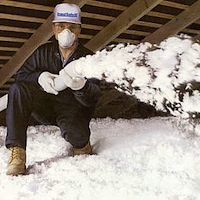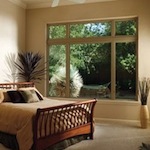Green Building Blocks: Part Three
At Green Home Source, we strongly believe that if we all do something, anything, to increase the efficiency and sustainability of our homes, we will helping to create a healthier, greener future. So much attention is paid to the concept of a complete, 100% green home that it creates the wrong idea about green design; it's not an all-or-nothing endeavor. There are many decisions and choices that go into the design and construction of any home; the desire to do things in an environmentally-sustainable manner adds another layer of complexity.
Our Building Blocks of Green process was created to help homeowners make these important decisions; some areas of green design are more difficult to achieve than others. Some are more expensive to implement, and some have a greater "green" return on investment than others. By identifying which Blocks are easiest to implement, homeowners can pick and choose which Blocks to incorporate into their home design, according to their own preferences and budgetary constraints.
The theory behind the Building Blocks is simple: by choosing even some of the Blocks, starting with the easiest to implement or those with the greatest cost-to-savings ratio, your new home will be part of the Green revolution. The best part about the Building Blocks of Green is that some of the easiest, least costly changes have the biggest environmental benefits.
We've taken a look at the basic Building Blocks, the Foundation and the Next Step Blocks. If you're ready to consider adding more Building Blocks into your green design or renovation, we continue now with the Step 3 Blocks. These Blocks greatly increase the efficiency of your home, saving a great deal of energy and money over time, but typically have a higher upfront investment than some of the earlier Blocks.
Upgrade Insulation
Insulation is an area best tackled during new home construction, but can provide big savings when renovating an existing home. In a homes' ceilings and walls, air infiltration is a major source of energy waste. Homes should have a complete insulation package that seals walls and attic spaces as tightly as possible. The insulation technologies today provide excellent performance, whether with spray foam, blown-in, batt-type, or a combination of insulation products. Specify 2x6 framing with 24" stud cavities to allow for more insulation and even greater energy savings.
Further Reading:
Upgrade HVAC
Heating and cooling a home is the largest source of energy usage in the home, and an area where you can realize big increases in efficiency. Todays' HVAC systems are much more energy-efficient than similar models of just a few years ago. By investing in the most-efficient heating and cooling system you can afford with your budget, your home will save energy and money for years to come.
Further Reading:
Insulate the Foundation
Adding insulation to the homes' concrete foundation is often overlooked during construction or renovation, and that simple mistake leads to large energy loss. Uninsulated foundations can reduce the efficiency of a heating and cooling system by up to 50% and can account for 25% of a homes entire energy loss. Rigid or spray-foam insulation can easily be installed during construction or in an unfinished basement. Insulating concrete forms (ICFs) are another type of foundation insulation.
In addition to its insulating properties, foundation insulation also adds an additional layer of waterproofing to the foundation walls, reducing moisture infiltration.
If you're planning a new home, consider a frost-protected shallow foundation or slab-on-grade construction for further efficiency.
Further Reading:
Basement (Foundation) Insulation
Upgrade the Windows
Like the other Blocks in this group, upgrading windows can be an expensive project, but can result in significant energy savings. Advancements in window technology have improved the energy performance of a typical window by over 50% since just the 1980s.Windows in a new home should include insulated low-e glazings at the very minimum. As your budget allows, consider more efficient window models such as those with triple panes or a low-conductivity gas between layers of glazing that greatly improve thermal performance.
Consider windows that have durable window frames made with renewable and/or recyclable materials and that have superior thermal performance.
Further Reading:
There are many Building Blocks that go into building a green home. Consider them all; their costs, their energy savings, their payback periods. Then determine which Blocks fit into the home you want to build and the budget you have to do it with.
To return to the main Building Blocks of Green page, click HERE .
comments powered by Disqus





























































































































































































